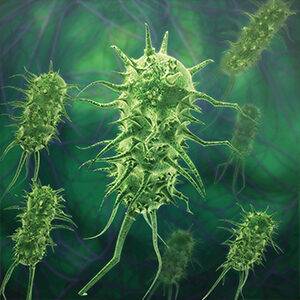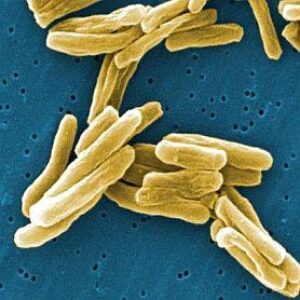What is TB?
Tuberculosis (TB) is a disease caused by bacteria that are spread from person to person through the air. TB usually affects the lungs, but it can also affect other parts of the body, such as the brain, the kidneys, lymph nodes, joints or the spine.
What are the symptoms of TB?
The general symptoms of TB disease include a productive cough, fever, night sweats, weight loss, chest pain, and coughing up of blood. Symptoms of TB disease in other parts of the body depend on the area affected.
How is TB spread?
TB bacteria are put into the air when a person with TB disease of the lungs coughs, sneezes, speaks, or sings. These bacteria can stay in the air for several hours, depending on the environment. Persons who breathe in the air containing the TB bacteria can become infected.
What is the difference between latent TB infection and TB disease?
People with latent TB infection (LTBI) have TB bacteria in their bodies, but they are not sick because the bacteria are not active or multiplying. These people do not have symptoms of TB disease, and they cannot spread the bacteria to others. However, they may develop TB disease in the future. They are often prescribed treatment to prevent TB disease from developing.
People with TB disease are sick from TB bacteria that are active or multiplying and destroying tissue in their body. They usually have symptoms of TB disease. People with TB disease can be capable of spreading TB bacteria to others. They are prescribed drugs to treat TB disease.
What should I do if I have spent time with someone with latent TB infection?
A person with latent TB infection cannot spread bacteria to other people. You do not need to be tested if you have spent time with someone with latent TB infection.
However, if you have spent time with someone with TB disease or with someone with symptoms of TB, you should go to your primary care physician or to a local clinic for testing and evaluation.
How do I get tested for TB?
There are tests that can be used to help detect TB infection: a skin test or TB blood tests. The Mantoux tuberculin skin test is performed by injecting a small amount of fluid (called tuberculin) into the skin in the lower part of the arm. A person given the tuberculin skin test must return within 48 to 72 hours to have a trained healthcare worker look for a reaction on the arm. The TB blood tests measure how the patient’s immune system reacts to the bacteria that cause TB.
What does a positive test for TB mean?
A positive test for TB only tells a person that they have been infected with TB bacteria. It does not tell whether or not the person has progressed to TB disease. Other tests, such as a chest x-ray or a sample of sputum, are needed to see whether the person has TB disease.
Is there a vaccine against TB disease?
Bacille Calmette-Guerin (BCG) is a vaccine for TB disease. BCG is used in many countries, but it is not generally recommended in the United States. BCG vaccination does not completely prevent people from getting TB. It may cause a false positive tuberculin skin test. Blood tests to detect TB infection, unlike the tuberculin skin test, are not affected by prior BCG vaccination and are less likely to give a falsepositive result.
Why is latent TB infection treated?
If you have latent TB infection but not TB disease, your doctor may want you to take a drug to kill the TB germs and prevent you from developing TB disease. Some people are more likely than others to develop TB disease once they have been infected. This includes people with HIV infection, people who were recently exposed to someone with TB disease, and people with certain medical conditions. There are effective medications to treat latent TB infection. Treatment may take from 12 weeks to 9 months, depending on the medications used.
How is TB disease treated?
TB disease can be treated by taking several drugs for 6 to 12 months. Treatment is completed with staff of the local health department who meet regularly with individuals and watch them take their medications. This is called directly observed therapy (DOT). It is very important to take all TB medicine exactly as prescribed by a physician.

Communicable Disease Investigation & Prevention (CDIP)
Epidemiologists monitor, track, and respond to infectious disease in the community to prevent spread of illness.

Tuberculosis Treatment for Health Care Providers
Working with providers on the incidence, distribution, and possible control of diseases, illnesses and other factors relating to health.
